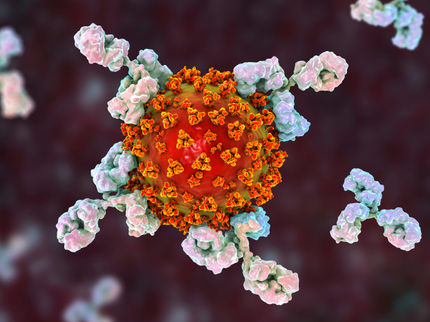How COVID-19 kills
New study explains the mechanisms, symptoms, and diagnosis of the new coronavirus
Advertisement
Covid-19, the disease caused by coronavirus SARS-CoV-2, has infected over 4 million people in 212 countries, of whom at least 272,000 have died. The ongoing economic and social impact of the pandemic is staggering, but despite a daily flood of news on the disease, few laypeople know that paradoxically, COVID-19 mostly kills through an overreaction of the immune system, whose function is precisely to fight infections.

Symbolic image
Engin_Akyurt, pixabay.com, CC0
In a new review article - explicitly targeted to non-specialists as well - in Frontiers in Public Health, a team of experts from Zunyi Medical University review the epidemiology, disease pathway, symptoms, diagnosis, and current treatment of severe COVID-19. They stress the key role of a potentially lethal overreaction of the immune system in the progression of the disease.
They explain step-by-step what is known about how the virus infects the airways, multiplies inside cells, and in severe cases causes the immune defenses to overshoot with a "cytokine storm". This storm is an over-activation of white blood cells, which release too-great amounts of cytokines - inflammation-stimulating molecules - into the blood.
"Similar to what happens after infection with SARS and MERS, data show that patients with severe COVID-19 may have a cytokine storm syndrome. The rapidly increased cytokines attract an excess of immune cells such as lymphocytes and neutrophils, resulting in an infiltration of these cells into lung tissue and thus cause lung injury," explains author Professor Daishun Liu from Zunyi Medical University, China.
The cytokine storm ultimately causes high fever, excessive leakiness of blood vessels, blood clotting inside the body, extremely low blood pressure, lack of oxygen and excess acidity of the blood, and build-up of fluids in the lungs ("pleural effusion").
White blood cells are misdirected to attack and inflame even healthy tissue, leading to failure of the lungs, heart, liver, intestines, kidneys, and genitals (Multiple Organ Dysfunction Syndrome, MODS). This may worsen and shutdown the lungs (Acute Respiratory Distress Syndrome, ARDS) due to the formation of a so-called hyaline membrane, composed of debris of proteins and dead cells, lining the lungs, which makes absorption of oxygen difficult. Most deaths due to COVID-19 are therefore due to respiratory failure.
Liu et al. explain how in the absence of a specific antiviral cure for COVID-19, the goal of treatment must be to the fight the symptoms, lowering the mortality rate through intensive maintenance of organ function, for example an artificial liver blood purification system or renal replacement therapy to filtrate the blood through mechanical means.
Especially important are methods to supplement or replace lung function, for example through non-invasive mechanical ventilation through a mask, ventilation through a tube into the windpipe (if possible with the refinement of Positive End Expiratory Pressure, PEEP, where the ventilator delivers extra pressure at the end of each breath of keep the lung vesicles open throughout), the administration of heated and humidified oxygen via a tube in the nose ("transnasal high-flow oxygen"), or a heart-lung bypass.
The authors conclude by stressing the importance of preventing secondary infections: SARS-Cov-2 also invades the intestines, where it causes inflammation and leakiness of the gut lining, allowing the opportunistic entry of other disease-causing microorganisms. They advocate that this should be prevented with nutritional support, for example with probiotics - beneficial bacteria that protect against the establishment of harmful ones - and nutrients and amino acids to improve the immune defenses and function of the intestine.
"Because treatment for now relies on aggressive treatment of symptoms, preventative protection against secondary infections, such as bacteria and fungi, is particularly important to support organ function, especially in the heart, kidneys, and liver, to try and avoid further deterioration of their condition," concludes Liu.

















































